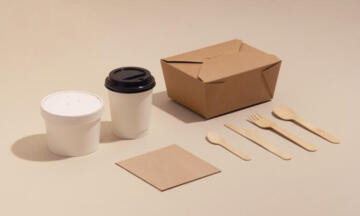Advantages of paper and cardboard
Paper and cardboard are highly popular packaging materials, and quite rightly so. They are made of strong, flexible fibres which are also easy to recycle. However, paper has its drawbacks: it allows moisture to permeate and it is not ideal for protecting food products from the air unlike plastic. That explains why quite a number of packaging companies choose to package their food products in paper coated with a thin layer of plastic: coated paper.
Easy separation of layers of paper and plastic
Coated paper meets quality and food safety requirements, but its circularityCircularity describes the quantity of materials managed in a closed loop. is called into question. In order to both recycle the paper and the thin layer of plastic, both materials must be suitable for this process, and they must also be easy to separate. Companies do not always know which materials to select to achieve that.
Sirris researches recyclability
The FPS Economy collects a vast array of information and tips about circular enterprise, and on how to reduce, reuseReuse designates all operations by which substances, materials or products that are not waste are used again in an identical way to their originally intended purpose. and recycle packaging. However, further research was needed to improve our insight into the feasibility of recyclingAny recovery operation through which waste, including organic waste, is reprocessed to become substances, materials or products that can be used for their initial function or other functions. coated packaging. Sirris, the Belgian Centre of Technological Industry, has collaborated with Flemish, German and Polish partners on the Repac² project. This study, which was launched in 2022, has researched which coatings are most suitable for recycling. The results have been compiled into an extensive White Paper, a handy guide to make the right packaging decisions.
Three suitable coatings
The Repac² study has compared six types of coated paper based on various criteria of the three steps involved: pulping the coated paper, separating the non-usable fibres and checking the quality of the new paper produced from the recycled fibres. Dispersion polymer coating, acrylic and vinyl coating and metallised paper scored high in terms of their suitability for recycling. EVOH (ethylene vinyl alcohol) coating, dispersion PE coated paper and extrusion coating have proven to be unsuitable for recycling.
Towards 70% recycled packaging
This information is extremely useful when selecting a coated paper that offers the necessary barrier properties and is also perfectly recyclable. The information is also useful to developers of new packaging materials. This knowledge is intended to help the industry achieve the European target: by 2030, 70% of all packaging must be fully recyclable.
Protecting your innovations
It is clear for all to see: circular packaging is the future. However, anyone experimenting in this field will often be investing considerable time, expertise and resources in research and development. You will want to protect any of the innovations which you are developing in order to strengthen your market position. Thanks to the support of the FPS Economy, you can contact Sirris with any queries relating to intellectual property. Their patent unit can give you all the relevant information relating to licensing opportunities, protecting confidential information and preventing plagiarism.
Any questions for the Sirris STANDARDS CELLA contact point where all companies can get free advice on standards in their specific domain?
As a knowledge centre for technological innovation, Sirris also plays an important part as a Standards Cell for the industry. Thanks to the support of the FPS Economy, you can contact the Sirris Standards Cell Industry 4.0 for more information about any current and future standards. This makes it easier for you as an entrepreneur to keep up-to-date with the latest changes, and you can ensure that your company is always in a good position to continue to develop and progress.
Has this article inspired you to introduce circularity into your business? Or perhaps you would like to know how much progress your company has already made, and which steps you can still take? Fill in the self-assessment tool and immediately receive a downloadable report full of useful advice. You can also find out what support there is available to you in the toolbox.




